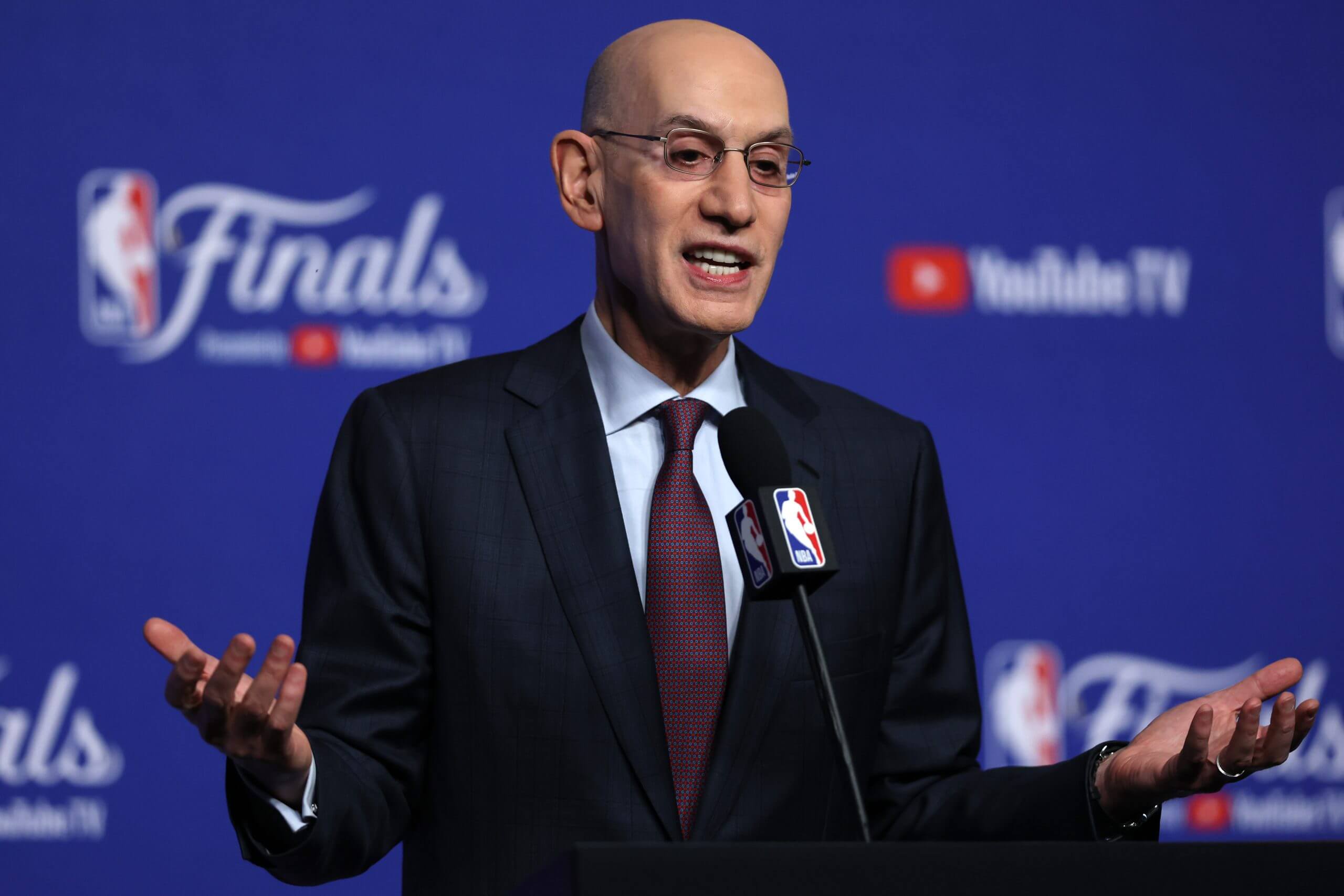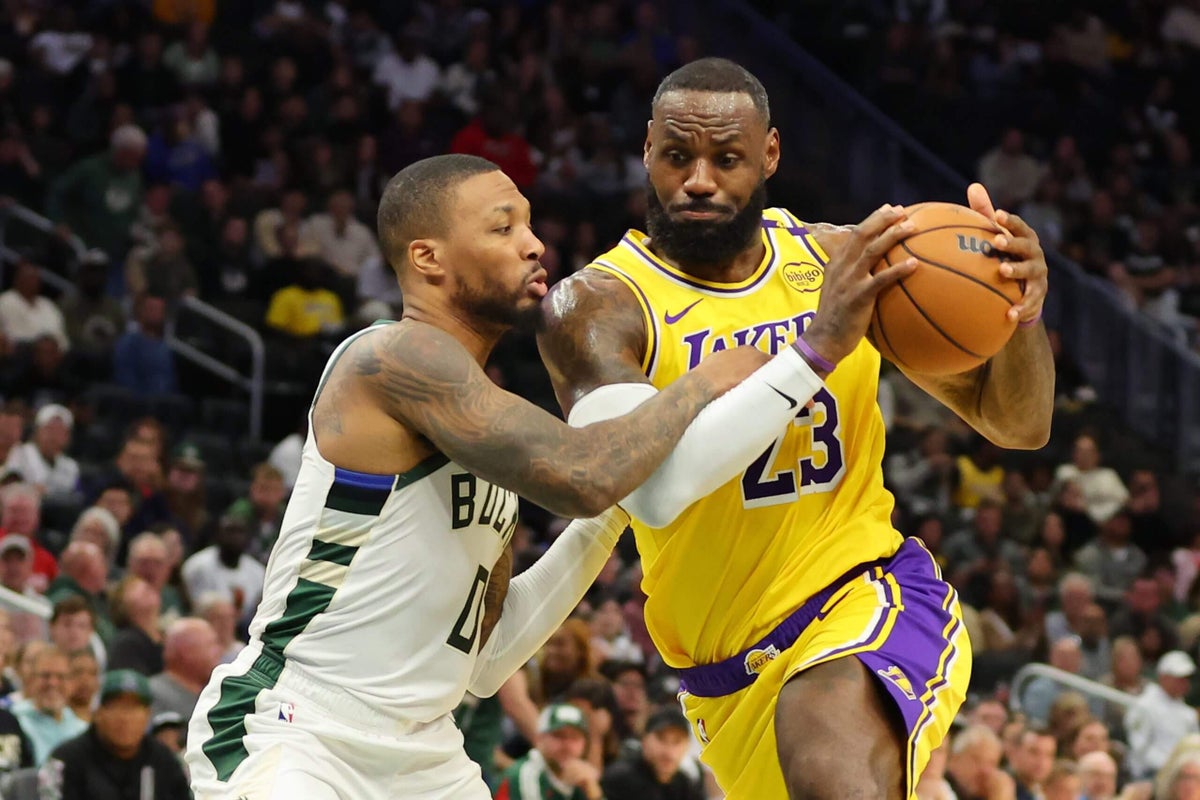LAS VEGAS — What happens in Vegas stays in Vegas, as the saying goes, but the underlying presumption of that is something will actually happen in the first place.
Las Vegas Summer League has become sort of the opposite: Player movement comes to a halt aside from a few restricted free-agency situations playing out, the best young players only take the court for a couple of games (if that), and the entire league unwinds from a long year.
Six years ago, we had an earthquake and Chris Paul getting traded for Russell Westbrook; this year, we had … the buyout market? Those of you working the police scanner since summer league started July 10 have been treated to a few two-way and minimum deals and some previously announced deals becoming official — and not a whole lot else.
NBA job-chasers have also noted that summer league isn’t the hiring free-for-all it used to be. With too few execs overwhelmed by too many resume-toters who are incredibly excited about opportunities with Team X, and a lot of said execs decompressing themselves from a brief and wild NBA transaction season (and keeping their Vegas stays shorter, I should add), I kept hearing that many clubs pushed back hiring and staffing decisions — including a couple of high-level front office positions — until later in the summer.
Still, plenty of situations had people talking. Let’s check in on what everyone was saying:
Dame’s return to Portland
Technically, I left Las Vegas before the Trail Blazers reached a deal to bring back franchise icon Damian Lillard on a three-year, $45 million deal, but talking to people in the league in the wake of it, this one had people scratching their heads.
The part about Lillard’s return to the Blazers is much more easily understood than the team’s half of the deal. Lillard still has his entire circle in Portland and returns as a living legend. He also got the exact contract that is most favorable for him, with only the league’s second active no-trade clause, plus a player option that lets him become a free agent in 2027 if he has a big return year in 2026-27.
In the meantime, Lillard will miss all of the 2025-26 season recovering from a torn Achilles tendon. However, he will make a combined $29 million from the Blazers in the two seasons; about $12 million of that will go back to the Milwaukee Bucks as offset after they decided to waive-and-stretch Lillard earlier this offseason, but it’s still a nice payday. Between the two contracts, Lillard will make about $64 million for the next two seasons, although most of the money will be stretched over five.
On the court for Portland, this amounts to a one-year, $28 million deal for Lillard in 2026-27, when he’ll be 36 and coming off that Achilles injury. Suffice to say, this doesn’t feel like much of a hometown discount. There’s also the issue of timing on this roster, given that it’s basically a young rebuilding team, but one that has now locked itself into contracts for Lillard, Jerami Grant and Jrue Holiday that will soak up more than half the cap in 2025-26 and 2026-27, and also 2027-28 should Lillard and Grant opt into the final year of their deals.
If you’re one of those people who likes to plot out multi-layered conspiracies with charts and arrows, there’s also plenty of room for that type of thinking. Between the impending sale of the team, the Lillard move and the surprise selection of Chinese center Yang Hansen in the first round of June’s draft, a lot of the conversation in Vegas was about whether the Blazers are making purely basketball decisions right now. How much does the optics for a potential buyer influence the basketball choices?
One thought is that recent contract extensions for general manager Joe Cronin and Chauncey Billups would give them the leeway to be more patient, but instead, the Blazers have seemingly gone in the opposite direction. The two big offseason moves have been adding Holiday and Lillard to a young team that doesn’t seem particularly close to challenging the Western Conference’s upper crust.
Can I get to a defensible basketball logic for the Lillard move? Sure. It goes something like this: The Blazers came into their nontaxpayer midlevel exception late after Deandre Ayton’s buyout, and Lillard was by far the best player they could get with that tool, this summer or next. Portland is far enough from next year’s tax line that this deal (and Holiday’s) have no material impact; even extensions for Shaedon Sharpe, Robert Williams and Toumani Camara wouldn’t push the Blazers into the tax in 2026-27. And the Blazers give themselves an off-ramp from the Scoot Henderson Experience if he doesn’t take a step forward in 2025-26.
By that logic, all Portland did was take itself out of some unlikely cap-room scenarios next offseason, scenarios that would likely disappear if the extensions I enumerated above happen. (I wrote about Camara’s situation for an extension earlier this summer.)
Still, there are a million ways this can go wrong. Lillard is a dead-money roster spot for 2025-26 and leaves the Blazers very thin in the backcourt after the Anfernee Simons trade; one presumes Portland will land a veteran point guard with its final roster spot (the Blazers can sign a veteran’s minimum contract and stay a few pennies below the tax line). Lillard will come back in the fall of 2026 wanting to prove he’s that Damian Lillard, which could be problematic if Henderson emerges in 2025-26; that combined with Lillard’s status in Portland could lend itself to some Kobe-in-2016 vibes.
Most importantly, however, is that the Blazers subtract the opportunity cost of having their nontaxpayer MLE available for trades that could add more long-term talent to the roster. If they have to wait on Lillard anyway, wouldn’t they be better off waiting on somebody younger?
Expansion
At the league’s Board of Governors meeting in Vegas, the NBA basically pumped the brakes on expansion, and our Mike Vorkunov and David Aldridge already told you the big reasons.
However, I think another aspect to this that people aren’t appreciating is the one-directional nature of it: You can’t un-expand. That, in part, helps explain why the league is slow-rolling the concept and forming review committees.
“They want to get to yes,” said one plugged-in team spy, but there’s really no urgency. The league can always sell buyers on a team in Seattle later, but whenever it does, it needs to make sure it’s a win beyond the initial windfall of an expansion fee. In particular, figuring out the imploding local TV landscape is critical, given that two new teams would just dilute the league’s national TV contract for the other 30 owners.

A larger footprint in Europe appears to be a short-term focus for the NBA and commissioner Adam Silver. (Matthew Stockman / Getty Images)
The league already missed its two best chances at fresh pro sports markets that have since been colonized by other leagues (Nashville and Las Vegas). Meanwhile, as long as Seattle has no team, it serves as a useful boogeyman for every other franchise that wants a new arena.
The other factor here is that the league’s European plans have taken on much more urgency. This isn’t NBA expansion; the basic elevator pitch is more along the lines of, “The Europeans are bad at making money from basketball, and we can do better.” The league sees a clear growth opportunity and has a much more specific time window for action.
Inevitably, that has taken some focus off expansion, but the long-term expectation from most people I’ve talked to is that it still happens … eventually. Just probably not soon enough for those in the 206 area code.
LeBron’s future
Oh yes, people were talking about LeBron James at summer league. Of course they were.
While he opted in to the final year of his contract and does not appear to be an imminent trade candidate, as our Joe Vardon and Dan Woike reported here, that doesn’t necessarily mean returning to the Los Angeles Lakers on a one-year deal was at the top of his wish list. In particular, the whispers about him having eyes for Dallas — a place where he could have teamed up with former teammates Anthony Davis and Kyrie Irving and young phenom Cooper Flagg — before opting into his deal were hard to ignore.
Obviously, James wasn’t willing to leave $52 million on the table to take a nontaxpayer MLE or something similar from the Mavericks or another team. A buyout seems similarly unlikely. Additionally, the tax aprons on both sides will make any in-season transaction with a contender-class team challenging.
Nonetheless, this situation bears watching from both sides, particularly if L.A. starts the regular season slowly. The Lakers set themselves up to have max cap room next summer once James’ salary comes off their books, taking advantage of an artificially low cap hold for Austin Reaves. If that’s their angle, wouldn’t it make sense to cash in their James stock if they aren’t challenging at the top of the West? Meanwhile, James has some power to choose his next destination via a no-trade clause, but free agency isn’t what it used to be. The best realistic way for him to get paid next summer by his team of choice is to land at his preferred destination via trade, and then have intact Bird rights in the summer of 2026.
Suns’ woes
The Phoenix Suns bought out Bradley Beal and stretched his remaining money, taking them out of the luxury tax entirely after they began the summer over the second apron. While that has some positive implications for unfreezing the Suns’ 2032 and 2033 draft picks, it’s hard to think that Team Damn the Torpedoes had that factor top of mind.
Instead, it’s a continuation of another theme: The Suns paring back sharply on expenses after owner Mat Ishbia’s opening two years in charge. That carried over in a humorous way to the postgame scene in Vegas, where other teams’ staffers noted with sadness that Suns personnel were no longer buying rounds for everyone and putting it on Ishbia’s tab.
After trading Kevin Durant, cutting Cody Martin and buying out and stretching Beal, the Suns are set to finish the year slightly under the luxury tax. One presumes they’ll be under by year-end to sidestep an onerous repeater tax.
(Going deeper: A veteran’s minimum signing for a 14th player would leave Phoenix slightly over the tax line entering the season, but it’s a pretty easy two-step to get back under if the player has a partial guarantee. Alternatively, promoting two-way Koby Brea into that spot on a rookie contract would ensure the Suns stay under all year. Cap nerds will note that some unlikely incentives in Dillon Brooks’ contract could also factor in here.)
Alas, the Suns’ previous profligacy has still left them with $22.5 million dead money through 2030 for Beal and the previously waived Nassir Little, to go with no control of their own draft picks through 2031. On the bright side, a more financially responsible operating model might help them stumble into some better decisions, but this franchise still has the league’s most depressing long-term outlook. In this case, the beer glass is truly half-empty.
(Top photo of LeBron James and Damian Lillard: Stacy Revere / Getty Images)
